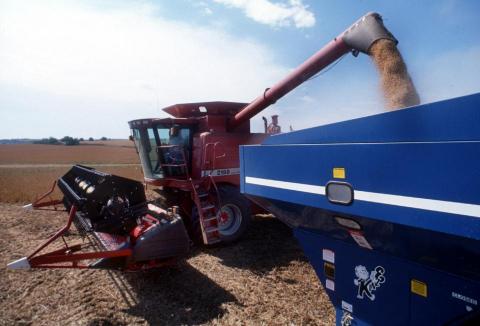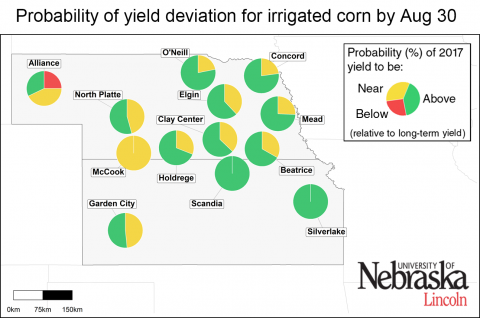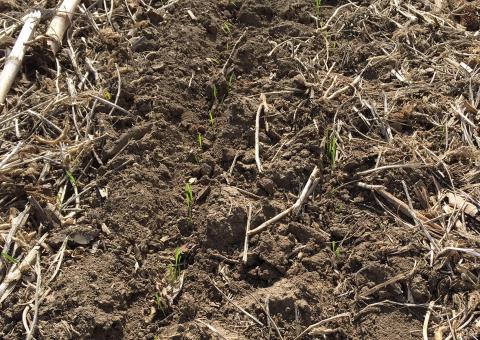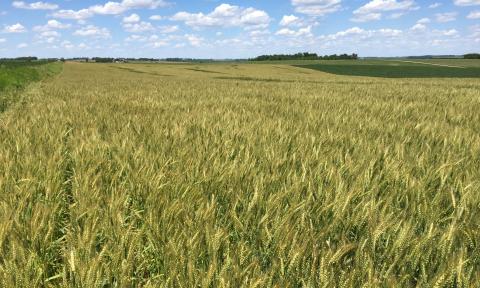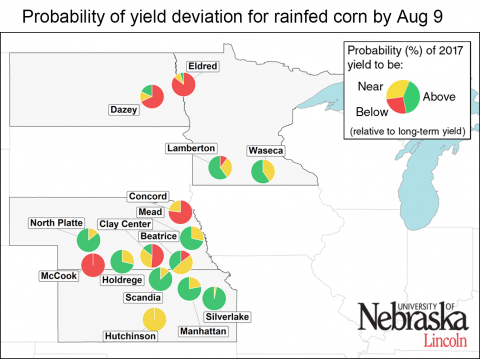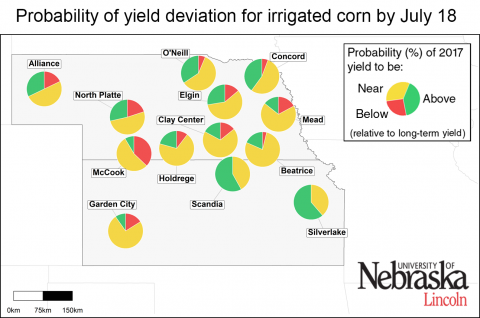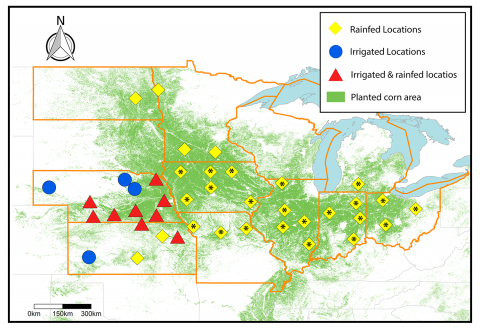Plan Harvest to Deliver Soybeans at the Optimum Moisture
September 1, 2020
Most soybeans are harvested and delivered directly to an elevator. Soybeans delivered below or above 13% moisture—the elevator standard—lose potential profit. The economics illustrated here show how harvest timing can affect potential income.
2017 Corn Yield Forecasts as of August 30
September 1, 2017
Forecasts for end-of-season corn yields improved across much of the Corn Belt since the early August forecast. View crop stage and yield forecasts as well as weather data. In Nebraska predictions are for near to above average corn yields for most sites, except northeast and northwest sites.
Why Grow Winter Wheat in Eastern Nebraska?
August 31, 2017
The winter wheat varieties planted in eastern Nebraska today can yield upward of 140 bu/ac under good management and weather. If you haven't planted wheat in several years, consider today's advanced genetics and these other benefits from integrating wheat into your rotation.
Wheat Planting Practices for Eastern Nebraska
August 31, 2017
While many growers are thinking of fall harvest, others are preparing to plant their next wheat crop. Based on information from farmers, agronomists, and researchers, outlined here are seven key steps to help ensure a successful wheat crop.
Recap of 2017 Eastern Nebraska Winter Wheat Crop
August 31, 2017
While final USDA yield numbers aren't in yet, it looks like 2017 wheat yields could rival the 2016 yields in portions of eastern Nebraska, based on state variety trials and extension educator reports. See the breakdowns by district.
2017 Corn Yield Forecasts as of Aug. 9
August 11, 2017
Corn yield forecasts for Nebraska sites indicate near-average to above average yields for most irrigated sites. There was much more yield variability for rainfed locations where three of the sites were forecast with a 50%-100% chance of below-normal yields and three were forecast for normal yields, while one was near average.
2017 Corn Yield Forecasts as of July 18
July 19, 2017
Corn growth stages are estimated for 41 sites in 10 states and yields are estimated for select irrigated and rainfed sites, based on the Hybrid-Maize model and input from specialists and educators across a 10-state area as of July 18, 2017. The authors note that these early season yield forecasts vary widely, particularly for rainfed fields, and may change considerably by end of season.
2017 Corn Yield Forecasts: Approach and Interpretation of Results
July 6, 2017
This article discusses data and data collection for the Yield Forecasting Center forecasts of crop phenology and yield for 2017, including a map of the site locations and specific data on crop management and soil types for each site.


